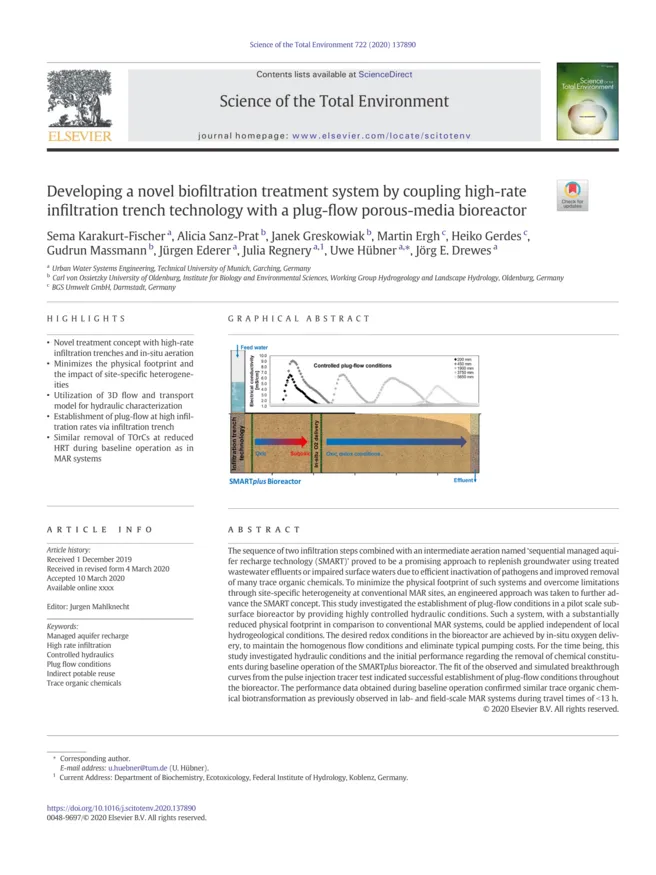The sequence of two infiltration steps combined with an intermediate aeration named ‘sequential managed aquifer recharge technology (SMART)’ proved to be a promising approach to replenish groundwater using treated wastewater effluents or impaired surface waters due to efficient inactivation of pathogens and improved removal of many trace organic chemicals. To minimize the physical footprint of such systems and overcome limitations through site-specific heterogeneity at conventional MAR sites, an engineered approach was taken to further advance the SMART concept. This study investigated the establishment of plug-flow conditions in a pilot scale subsurface bioreactor by providing highly controlled hydraulic conditions. Such a system, with a substantially reduced physical footprint in comparison to conventional MAR systems, could be applied independent of local hydrogeological conditions. The desired redox conditions in the bioreactor are achieved by in-situ oxygen delivery, to maintain the homogenous flow conditions and eliminate typical pumping costs. For the time being, this study investigated hydraulic conditions and the initial performance regarding the removal of chemical constituents during baseline operation of the SMARTplus bioreactor. The fit of the observed and simulated breakthrough curves from the pulse injection tracer test indicated successful establishment of plug-flow conditions throughout the bioreactor. The performance data obtained during baseline operation confirmed similar trace organic chemical biotransformation as previously observed in lab- and field-scale MAR systems during travel times of <13 h.
